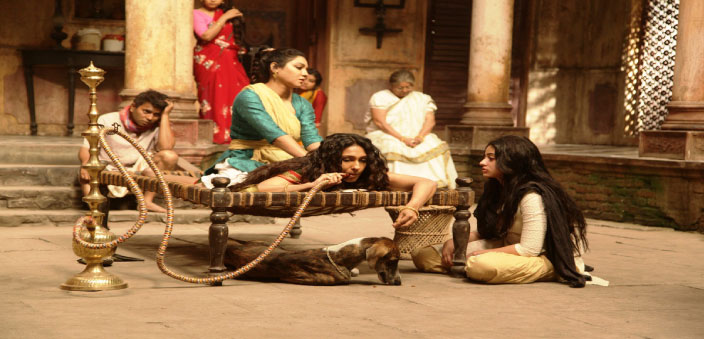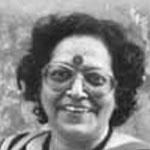“When Sir Cyril Radcliffe drew the line dividing the country, he had no freaking idea of the topography, demographics or socioeconomic divisions. The only driving principle was the ratio of majority versus minority on the basis of religion. The division was random and clumsy. The line passed through jungles, hills, rivers – sometimes through villages and even houses. The idea of this line struck me the most and I decided that this had to be the central narrative of Rajkahini. Here, the house becomes a metaphor for the country – in a brothel, there is no discrimination between high caste and low caste, Hindu and Muslim. Everyone works and the unifying factor is money. My story explores what happens when this line divides this house, just as it also divides India”, Srijit Mukherjee, eminent director of contemporary Bengali cinema, describes the core of the story of his new film Rajkahini that throws the Partition story in a completely unique perspective.
Radcliffe’s Line or a hasty act of division?
Radcliffe and the other commissioners, with solid backgrounds in law, did not have the specialised knowledge this job demanded. They had no advisers to inform them of the well-established procedures and information needed to draw a boundary. Nor was there time to gather the survey and regional information. The absence of experts and advisers, such as the United Nations was deliberate, to avoid delay. The film is in Bengali, but its subject spans the entire country and even Bangladesh, which was once a part of India and then became a part of Pakistan, to become an independent nation in 1971.
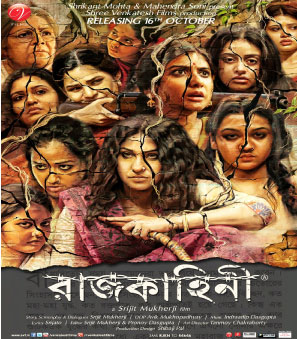
When they are commanded to evacuate the house they have lived and worked in all these years, they voice a collective protest because they consider this their home and they have no option to live elsewhere. Which part of the dividing line will they be allowed to move into – India or East Pakistan? Why should the line pass through their house? But their questions keep hanging in the air because as sex workers, they live in the margins of society that considers them social outcasts – so whether they live or die or where they live and how they live is of no concern to the powers-that-be that includes the local Muslim and Hindu fraternity, alongside the British officers, who are vested with the authority of evacuating them. “For me, the brothel stands as a metaphor for the country, because within a brothel and those who inhabit it, the man-made discriminations do not exist and the sole unifying factor is money. My story explores what happens when this line divides this house, just as it also divides India.
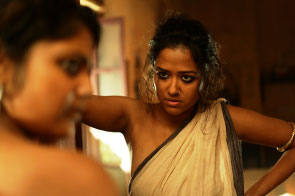
While exploring a new subject for a novel film, Srijit began researching literature on and about the Partition. By the end of 2013, he began reading the works of Sadat Hasan Manto, Ismat Chugtai, Urvashi Butalia, Suvir Kaul, Mushirul Hasan, Haimanti Roy and Jaya Chatterjee. “What struck me was the way women on either side of the imaginary Radcliffe Line were treated irrespective of caste, class, age and social status. The worst affected were the women in the margins. In this film, the lead is taken by Begum Jaan portrayed by National Award winning actress Rituparna Sengupta. Along with her girls, she forms a group and trains them in combat with lathis and guns. The name Begum Jaan has been inspired from a character from Ismat Chughtai’s Lihaaf and the other character Rubina in the film played by Parno Mitra is also named after the other character in the same story. You can say that these women are my personal tribute to Ismat Chughtai,” says Srijit. He has also named a male character Salim Mirza after the protagonist in Sayeed Mirza’s film Garam Hawa. The women underwent tough training in wielding the lathi and guns in preparation for the battle they wage against the people who come to evacuate them.
The 11 women are portrayed by some of the most talented and committed artistes in Bengali cinema led by Lily Chakraborty who plays the old and retired sex worker who is a maternal figure for the women. The other actresses are Jaya Hassan (Bangladesh), Parno Mitra, Sudipta Chakraborty, Priyanka Sarkar, Shayoni Ghosh, Ena Saha, Ditipriya Ghosh, Riddhima Ghosh and Sohini Sarkar. Rituparna Sengupta who is a top lead actress of Bengali cinema, needed to strip herself of all her previous heroine portrayals to imbibe the toughness the character of Begum Jaan demanded. She turned her voice into a coarse and rough grind with intensive rehearsals in the dubbing theatre to make it realistic and rough and hoarse. She considers it one of the most outstanding performances of her career.
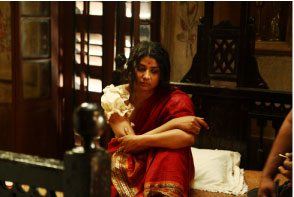
Another attraction of Rajkahini is the rendering of the song Bharata Bhagya Bidhata picked from the remaining four stanzas from Tagore’s poem composed in 1911, of which the first two were officially recognised as the National Anthem of the country in 1950 – Jana gana mana. The best singers in West Bengal, irrespective of caste, class, creed and regional factions, have contributed to this number without accepting any payment. What more could Sirjit Mukherjee, his production banner Shree Venkatesh Films and his entire team and crew want?

